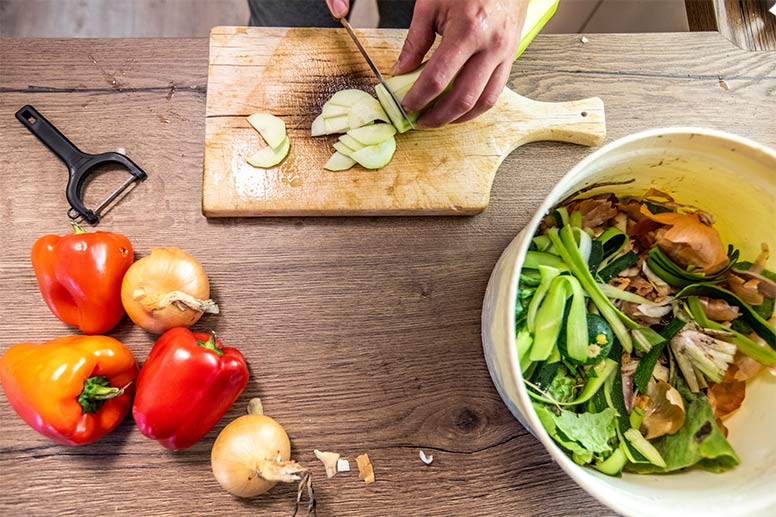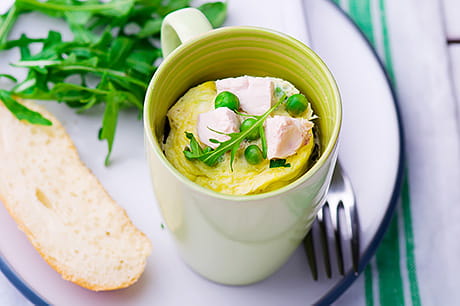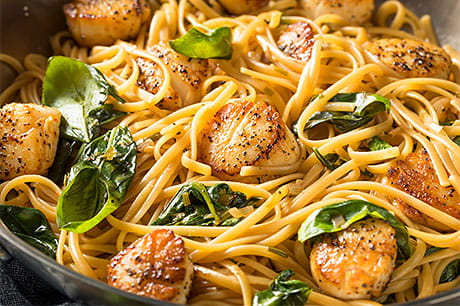Recipes to celebrate World Vegetarian Day
Whether you’ve been a vegetarian for years or would just like to add more veggies to your diet, these recipes offer something nutritious and tasty for everyone.
People around the world choose to eat a vegetarian diet for a variety of reasons. Cultural, religious, environmental and concern for animals are a few — and many explore plant-based eating for health reasons.
Vegetarian diets can help you reduce your risk of heart disease and diabetes, lower your blood pressure and achieve a healthier weight. There are a lot of compelling reasons to skip or cut back on meat and choose plant-based meals instead.
Types of vegetarian diets
There are different types of vegetarian diets. Some vegetarians don’t eat meat, but will eat poultry, fish or eggs. Vegans elect to avoid all foods from an animal source, which includes any dairy foods, such as milk, yogurt and cheese. Vegetarian diets can be quite healthy, as they are low in saturated fat, cholesterol and sodium but rich in healthy fats, fiber and antioxidants.
Vegetarian diets are centered around beans, split peas, soy, nuts, seeds, whole grains, fruits and vegetables. If you eat a variety of foods, a vegetarian diet can provide all the nutrients you need for a healthy diet. However, there are certain nutrients that require special attention:
- Protein – found in whole grains, nuts, seeds, soy, dried beans, peas, dairy and eggs
- Calcium – found in some fruits and vegetables, grains, legumes, nuts and dairy
- Iron – found in vegetables, legumes, fruits, seeds and eggs
- Zinc – found in legumes, nuts, seeds, whole grains and dairy
- Vitamin B12 – found in eggs, dairy, fortified foods and vitamin supplements (plant-based foods don’t naturally contain vitamin B12 and must be fortified)
- Vitamin D – found in eggs, fortified dairy foods
- Iodine – found in cheese, yogurt, milk, eggs, seaweed, grains, plant-based milks fortified with iodine, iodized salts and iodine supplements (which may be needed in vegan diets)
If you’re concerned you may not be getting enough of certain nutrients in your diet, speak to your healthcare provider. You can also ask to meet with a registered dietitian or nutritionist.
How to start eating a plant-based diet
Thinking about going vegetarian or eating a more plant-based diet? Start by replacing one meat-based meal at a time. For example, begin with one weeknight such as meatless Monday. Opt for meals such:
- Pasta primavera with marinara or pesto sauce
- Veggie pizza
- Vegetable lasagna
- Tofu-vegetable stir fry
- Vegetable lo mein
- Vegetable kababs
- Bean burritos or tacos
- Chili made with extra beans instead of meat
- Vegetable soup made with beans or lentils
There are plant-based meat substitutes in the freezer and produce aisles: veggie burgers, meatless bacon, hot dogs, “beef crumbles,” faux chicken nuggets, sausage and “beef strips.” These are a quick, easy and convenient way to introduce plant proteins into your diet, but can be high in sodium and additives.
Tofu is a versatile plant-based protein that you can easily add to soup, stew, pasta sauce or stir-fry in place of meat.
For more ideas, check out the following websites:
- ChooseMyPlate.gov – Tips for Vegetarians
- OldwaysPT.org
- VegetarianTimes.com
- Vrg.org
- VeganHealth.org
- VegKitchen.com
- VegWeb.com
- MeatlessMonday.com
- PlantBasedOnABudget.com
Try these vegetarian recipes
Ready to try out a new vegetarian recipe? These recipes are healthy, hearty and easy to make.
Rice and veggie skillet
A hearty and tasty one-pot skillet dish that can be made in less than 30 minutes.
Makes 4 servings.
Ingredients
- One 10-ounce package frozen broccoli (can also use mustard greens, collard greens or spinach)
- Two 15-ounce cans stewed tomatoes, low-sodium
- 1 cup brown rice, cooked
- One 15-ounce can white beans, rinsed and drained
- Pepper (to taste)
- Oregano, basil, hot pepper or other spices (to taste, optional)
Directions
- Steam greens in the stewed tomatoes using a small pan, pot, or electric skillet on medium-high heat.
- Cook greens 10 to 20 minutes, until they are as soft as you like them. Stir gently.
- Add the rice, canned beans and seasonings.
- Cook until heated through.
Nutrition information per 1½-cup serving: 276 calories, 1 g total fat, 0 g saturated fat, 724 mg sodium, 55 g carbohydrate, 12 g dietary fiber, 16 g protein
Vegetarian chili
This delicious chili is packed full of veggies, beans and spices.
Makes 4 servings
Ingredients
- 2 large onions, cut into ¼-inch pieces
- 1 green bell pepper, cut into ¼-inch pieces
- 3 garlic cloves
- 2 fresh jalapeños, diced
- 2 tablespoons vegetable oil
- 1 tablespoon chili powder
- 1 tablespoon cumin (ground)
- Two 14-ounce cans whole tomatoes, low-sodium, cut into ¼-inch pieces (can also use 8 medium fresh tomatoes)
- 2 medium zucchinis, cut into ¼-inch pieces
- 2 medium summer squash, cut into ¼-inch pieces
- One 16-ounce can kidney beans, rinsed
- 1 cup fresh cilantro, chopped
- Salt and pepper (to taste, optional)
Directions
- In a large pot, sauté onion, bell pepper, garlic and jalapeño in oil over medium-high heat for about 5 minutes, stirring often.
- Add chili powder, cumin, half of the chopped cilantro, salt and pepper and continue cooking for another 3 minutes, stirring occasionally.
- Add the tomatoes, zucchini, squash and bring mixture to a simmer.
- Simmer for 15 minutes, stirring occasionally.
- Add beans and continue to simmer for another 5 minutes.
- Serve the mixture hot. Top with remaining cilantro.
Nutrition information per serving: 272 calories, 9 g total fat, 1 g saturated fat, 286 mg sodium, 42 g carbohydrate, 12 g dietary fiber, 12 g protein
Recipe source: ChooseMyPlate.gov/recipes
Next steps:
Looking for more? Explore our dietitian-approved recipes
Want to meet with a nutritional specialist? Find a nutritionist near you





